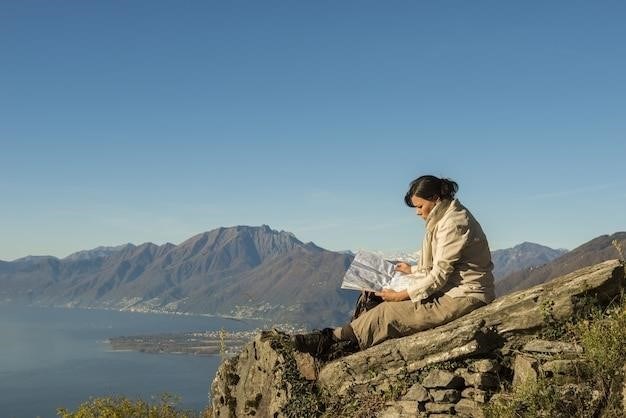
Tour du Mont Blanc Self-Guided⁚ A Comprehensive Guide
Embark on an unforgettable journey around Mont Blanc, traversing breathtaking alpine landscapes across France, Italy, and Switzerland․ This comprehensive guide provides essential planning tips, detailed itineraries, gear recommendations, and safety advice for a successful self-guided trek․ Discover the best routes, accommodation options, and practical strategies to ensure a memorable and rewarding experience․
Planning Your Self-Guided Trek
Planning a self-guided Tour du Mont Blanc (TMB) trek requires meticulous preparation․ Begin by determining your fitness level and desired pace․ The classic TMB route is approximately 170km and takes 7-11 days to complete, but you can adjust the itinerary to your preferences․ Research and book accommodations in advance, especially during peak season․ Refuges and hotels along the trail often fill up quickly․ Consider factors like altitude, weather conditions, and potential trail closures when making your plans․ Familiarize yourself with the trail map, noting key landmarks, potential challenges, and alternative routes․ Pack appropriately for varying weather conditions; layers are crucial․ Ensure you have sufficient water purification or bottled water for each day․ Arrange for luggage transfer if you don’t want to carry everything, utilizing services offered by some hotels or businesses along the trail․ Finally, inform someone of your itinerary and expected return date, prioritizing safety and communication throughout your journey․ A well-planned self-guided TMB trek guarantees an unforgettable experience․
Choosing Your Route and Itinerary
The Tour du Mont Blanc (TMB) offers various routes and itineraries catering to different preferences and experience levels․ The classic route, a 170km loop, typically takes 7-11 days, encompassing France, Italy, and Switzerland․ You can choose to hike the entire circuit or select sections based on time constraints and fitness․ Consider starting in Les Houches, France, the traditional starting point, or another convenient location․ Numerous guidebooks and online resources provide detailed maps and descriptions of the various trails, including alternative routes and potential detours to lakes or viewpoints․ While the classic route is well-marked, researching alternative routes, such as the Fenêtre d’Arpette or the Col des Fours, adds flexibility and potentially stunning views, though they may present greater challenges․ When planning your itinerary, factor in daily hiking times, elevation changes, and rest days for acclimatization․ Remember to account for potential delays due to weather conditions or unforeseen circumstances․ A well-researched itinerary ensures a smooth and enjoyable TMB experience tailored to your capabilities and aspirations․
Essential Gear and Packing List
Packing appropriately is crucial for a comfortable and safe TMB trek․ Prioritize lightweight, durable gear suitable for varied weather conditions․ Essential items include a comfortable backpack (50-65 liters), sturdy hiking boots broken in beforehand, moisture-wicking clothing layers (base layers, fleece, waterproof jacket and pants), warm hat and gloves, sunscreen, sunglasses, and a wide-brimmed hat for sun protection․ Bring a first-aid kit with blister treatment, pain relievers, and any personal medications․ Don’t forget a head lamp or flashlight, trekking poles for stability and reduced strain on joints, a reusable water bottle or hydration reservoir, and a map and compass or GPS device․ A power bank for charging electronics is also vital․ Consider packing lightweight rain gear, a down jacket for warmth, and insect repellent․ Remember toiletries, a towel, and quick-drying clothes․ A sleeping bag liner is recommended for stays in mountain refuges․ Finally, pack a small daypack for carrying essentials during daily hikes․ Thoroughly check weather forecasts before you go and adjust your packing list accordingly․ Lightweight is key; every ounce counts on this multi-day hike․
Accommodation Options⁚ Refuges and Hotels
Accommodation choices along the Tour du Mont Blanc range from basic mountain refuges to comfortable hotels in charming villages․ Refuges, often found at higher altitudes, provide dormitory-style sleeping arrangements with bunk beds․ While basic, they offer a unique experience and a chance to connect with fellow hikers․ Reservations are highly recommended, especially during peak season, as spaces fill quickly․ Many refuges offer half-board options (dinner and breakfast), which can be a convenient and cost-effective choice․ Alternatively, you can find hotels or guesthouses in towns and villages along the route, providing more comfort and amenities like private rooms and en-suite bathrooms․ These options allow for a more luxurious experience but often require more planning and potentially more expensive accommodation․ Consider your budget and personal preference when making your choice․ Booking in advance is highly recommended for both refuges and hotels, particularly if traveling during peak season․ Remember to confirm your bookings and clarify the included amenities before your arrival․
Navigation and Safety Precautions
Navigating the Tour du Mont Blanc independently requires careful preparation and adherence to safety protocols․ While the trail is generally well-marked, carrying a detailed map and compass, or preferably a GPS device with downloaded maps, is crucial, especially in areas with less clear signage or changeable weather conditions․ Familiarize yourself with the route beforehand, studying maps and guidebooks to understand potential challenges and alternative routes․ Inform someone of your itinerary, including planned stages and estimated arrival times at each destination․ Check weather forecasts regularly and be prepared for sudden changes in conditions, packing appropriate layers and rain gear․ Carry a first-aid kit and know basic first aid techniques․ Be aware of altitude sickness symptoms and take necessary precautions․ Stay hydrated by drinking plenty of water throughout the day․ Respect the environment by sticking to marked trails and disposing of waste responsibly․ Be mindful of wildlife and maintain a safe distance․ If you encounter any difficulties, don’t hesitate to seek assistance from fellow hikers or local authorities․ Remember, safety is paramount; prioritize your well-being throughout your adventure․
Stages of the Tour du Mont Blanc
This iconic trek typically spans 7-11 days, encompassing diverse landscapes and cultural experiences across France, Italy, and Switzerland․ Each stage presents unique challenges and rewards, from high mountain passes to charming villages․ Detailed daily itineraries are crucial for planning a successful self-guided adventure․
Stage 1⁚ Les Houches to Refuge Nant Borrant
Commencing your Tour du Mont Blanc self-guided adventure from Les Houches, you’ll encounter two distinct route options․ The first involves a challenging, steep initial ascent, covering approximately 68 kilometers․ Alternatively, a more accessible approach utilizes a cable car, bypassing the initial strenuous climb․ This initial stage sets the tone for the entire trek, offering a blend of moderate difficulty and breathtaking views․ Expect varying terrain, from well-maintained trails through charming French villages to more demanding uphill sections․ The journey will likely take around 7 hours, including breaks to soak in the stunning scenery and replenish energy․ Remember to pack appropriately for changing weather conditions and maintain a consistent pace․ Reaching Refuge Nant Borrant, your first night’s accommodation, signifies a successful commencement to your epic journey․ Enjoy the rewarding sense of accomplishment as you settle in for the night, preparing for the many adventures that lie ahead on the Tour du Mont Blanc․
Stage 2⁚ Refuge Nant Borrant to [Next Destination]
Stage 2⁚ Refuge Nant Borrant to [Next Destination]
Day two of your self-guided Tour du Mont Blanc begins with the potential for some muscle stiffness, a common experience after the first day’s exertion․ The route from Refuge Nant Borrant offers a variety of terrain, allowing you to adjust your pace and enjoy the scenery․ Depending on your chosen itinerary, this stage might involve a detour to Refuge Robert Blanc, adding a unique element to your journey․ Remember to check weather forecasts and adjust your plans accordingly․ The availability of food and refreshments at various points along the route allows for lighter backpacks․ Take advantage of opportunities to refuel and hydrate throughout the day․ The trail continues to present stunning views of the surrounding mountains and valleys, making it worthwhile to take frequent breaks for photography and reflection․ The distance and elevation gain will vary depending on your chosen route, but expect a challenging yet rewarding day of hiking․ Ensure you have adequate supplies, including sufficient water and snacks, before setting off from Refuge Nant Borrant․ Enjoy the diverse landscapes and the sense of accomplishment as you reach your next destination․
Stage 3⁚ [Previous Destination] to [Next Destination] (Example⁚ Italy Section)
This stage marks your transition into Italy, a significant milestone on your Tour du Mont Blanc adventure․ The scenery transforms dramatically as you cross the border, offering a fresh perspective on the alpine landscape․ This section often involves traversing high mountain passes like the Col de la Seigne, presenting both physical and visual challenges․ Remember to check the weather conditions before you start, as high-altitude passes can be affected by sudden changes․ The descent into Val Veny and Courmayeur is equally spectacular, revealing picturesque valleys and charming Italian villages․ Take time to appreciate the cultural shift as you move from France into Italy; observe the architectural styles and immerse yourself in the local atmosphere․ The availability of accommodation in Italian rifugios or mountain hotels provides a range of options for your comfort and budget․ Remember to book in advance, particularly during peak season, to secure your preferred lodging․ This stage offers opportunities for unique culinary experiences, so take the chance to savor Italian cuisine and local delicacies․ Be mindful of the change in altitude and adjust your pace accordingly, taking breaks as needed to avoid overexertion․ The rewarding views and cultural immersion make this a highlight of the TMB experience;
Stage 4⁚ [Previous Destination] to [Next Destination] (Example⁚ Switzerland Section)
Entering Switzerland, the fourth stage presents a distinct change in scenery and atmosphere․ This leg of the journey often involves crossing the Grand Col Ferret, another high mountain pass demanding stamina and appropriate preparation․ The views from the pass are breathtaking, offering panoramic vistas of the surrounding peaks and valleys․ The descent into the Swiss Val Ferret is a gradual transition, showcasing the unique charm of Swiss villages․ As you progress, the landscape might shift from rugged alpine terrain to greener pastures and charming hamlets․ The cultural transition is subtle yet noticeable, with a shift in architectural styles and local customs․ Consider taking advantage of the opportunity to sample Swiss chocolate and cheese, renowned delicacies of the region․ Navigation in this section might require more attention to detail, as the trail might intersect with other paths․ Always ensure you have a reliable map and compass, or utilize a GPS device for accurate navigation․ Accommodation options in Switzerland might vary, ranging from mountain huts to comfortable hotels in nearby villages․ Booking ahead is recommended, especially during the peak seasons to avoid disappointment․ This stage offers a chance to explore the peaceful Swiss countryside, a welcome contrast to the more rugged terrain of previous stages․ Remember to adjust your pace according to your fitness level, enjoying the picturesque landscapes at your own rhythm․

Tips for a Successful Self-Guided Trek
Thorough planning is paramount for a smooth Tour du Mont Blanc experience․ Before embarking, meticulously research your chosen route, considering daily distances and elevation changes․ Acclimatization is crucial; gradually increase your hiking intensity in the weeks leading up to your trek․ Pack strategically; lightweight, high-quality gear is essential․ Remember rain gear, extra layers, and sturdy hiking boots․ Utilize reliable maps and navigation tools; a GPS device or a detailed map app is highly recommended․ Book accommodations in advance, especially during peak season․ Refuges and hotels often fill up quickly․ Inform someone of your itinerary and expected return; this is a crucial safety precaution․ Maintain consistent hydration; carry sufficient water and electrolytes throughout your hikes․ Proper nutrition is vital; pack energy bars, trail mix, and other high-energy snacks․ Be mindful of altitude sickness symptoms; ascend gradually and listen to your body․ Allow for flexibility in your schedule; weather conditions can impact your plans․ Engage with local communities; experience the rich culture and hospitality of the regions you traverse․ Respect the environment; practice Leave No Trace principles․ Most importantly, enjoy the incredible journey; savor the breathtaking views and the sense of accomplishment along the way․